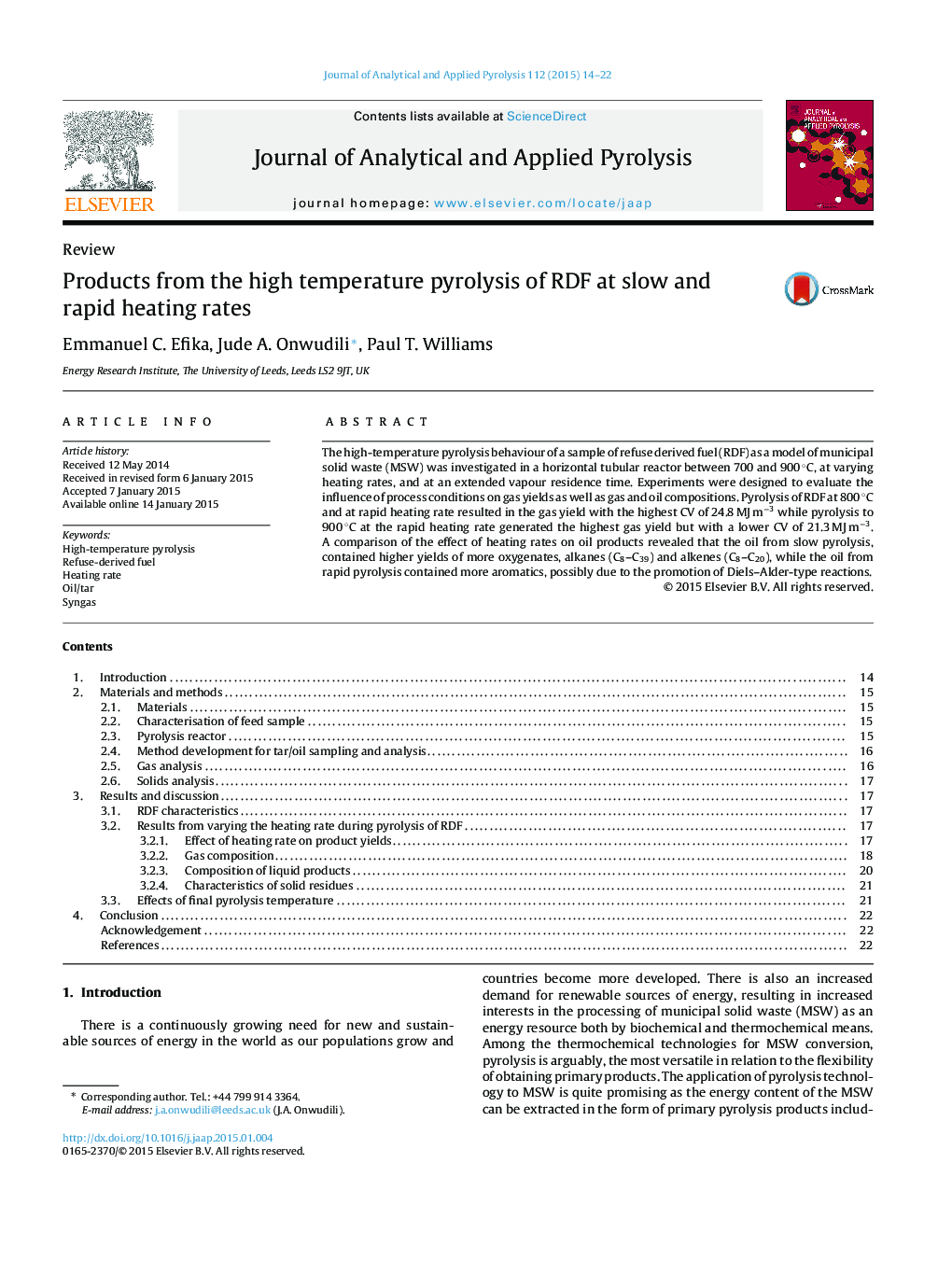| Article ID | Journal | Published Year | Pages | File Type |
|---|---|---|---|---|
| 1197212 | Journal of Analytical and Applied Pyrolysis | 2015 | 9 Pages |
•High heating rates increased gas formation while reducing liquid yields at a final fixed temperature.•Yields of solid residue remained relatively similar due to containing ash.•Oil/tar compositions became increasingly aromatic with increased heating rate at fixed final temperature and with increasing temperature at a fixed heating rate.•Differences in gas and oil/tar yields indicate occurrence of gas–gas and liquid–gas reactions with increasing heating rate and final pyrolysis temperature.
The high-temperature pyrolysis behaviour of a sample of refuse derived fuel (RDF) as a model of municipal solid waste (MSW) was investigated in a horizontal tubular reactor between 700 and 900 °C, at varying heating rates, and at an extended vapour residence time. Experiments were designed to evaluate the influence of process conditions on gas yields as well as gas and oil compositions. Pyrolysis of RDF at 800 °C and at rapid heating rate resulted in the gas yield with the highest CV of 24.8 MJ m−3 while pyrolysis to 900 °C at the rapid heating rate generated the highest gas yield but with a lower CV of 21.3 MJ m−3. A comparison of the effect of heating rates on oil products revealed that the oil from slow pyrolysis, contained higher yields of more oxygenates, alkanes (C8–C39) and alkenes (C8–C20), while the oil from rapid pyrolysis contained more aromatics, possibly due to the promotion of Diels–Alder-type reactions.
